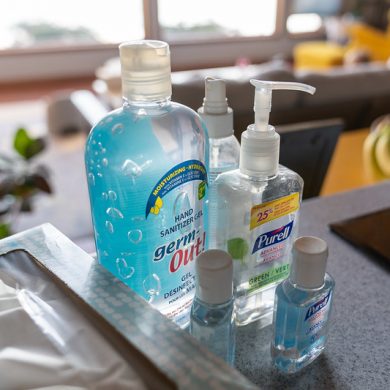BY M.N. | BLOGGER | SQ ONLINE (2018-19)
We’ve all done it: dropped a piece of food on the floor and picked it back up– just in time! Many people follow the “five second rule” in their day-to-day lives. It is a motto that has followed us from the playground to adult life.
Some say the myth originated during Ghengis Khan’s reign. Abiding by the “Khan Rule”, food dropped on the floor at Khan’s banquets were deemed perfectly good for consumption. Fast forward to the 1960s– we see Julia Child, a renowned chef, put the five second rule into practice on her TV show. She drops the food she’s making and reassures viewers that it’s okay because: “Who is going to see?” But is it true? Is it safe to eat something after you’ve dropped it on a dirty surface (for less than five seconds, of course)?

Julia Child, famous American chef, TV icon, and alleged originator of the five second rule. (Source)
A study at Clemson University tested the five second rule. They put food on various surfaces for different lengths of time, and observed the amount of bacteria that was transferred. They concluded that the length of time on the dirty surface had no significant effect on the amount of bacterial contamination. However, the amount of bacteria that there was to begin with on the surface correlated with the amount of contamination. Other studies have also confirmed that five seconds is more than enough time for bacteria to contaminate, as it happens almost immediately. Additionally, the type of surface affects how much contamination is likely to occur; tile and wood cause the most contamination, and carpet the least. Perhaps there can be a “carpet rule” instead!
Additionally, a study from Rutgers University tested how easily four different foods were contaminated after coming into contact with a soiled surface. They concluded that gummy candy was least contaminated after coming into contact with a bacteria-infested surface. Plain bread was less contaminated than buttered bread, and watermelon was the most contaminated of the four. This hints at a pattern of more moist foods being more susceptible to contamination when dropped.
Although bacteria like E. coli can have dire consequences if ingested, not every surface your food comes into contact with will have such dangerous infectants. All in all, the scientific consensus is that the five second rule cannot be a sound assurance that your food is safe to eat– but we’ll probably continue doing it anyway!

And with this, we bring the Scientific Myths blog series to an end. Thank you so much for reading! I’m hoping y’all learned something new, gained a new perspective, or maybe got a laugh out of these this year.
Congratulations on finishing another school year, and I hope your summers feel longer than five seconds.


